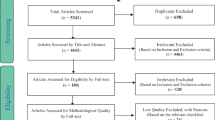Abstract
The time taken for radio-opaque markers to pass through the intestine has been measured in 25 healthy men, and 18 healthy women in both the follicular and luteal phases of the menstrual cycle. The subjects collected all stools after ingestion of the markers, the number of markers present in each stool was counted on a radiograph, and the number of markers retained in the body was thus determined for 12 hourly intervals after ingestion. The mean values (2 standard deviations) for men and women in both phases of the menstrual cycle proved to be so similar that the results have been combined to provide a single normal range. These data for the normal range for retained markers (as assessed by plain radiograph) are presented in diagrammatic form for clinical use. To assess whether a patient's whole gut transit time lies within the normal range a single type of marker can be used and an abdominal radiograph performed at 12 or 120 hours, the limits of the normal range. Normal subjects retain more than 20% of markers within 12 hours and less than 80% after 120 hours. If desired more information can be gained by giving different types of marker on successive days, so that several transit studies providing intermediate values can be obtained from a single abdominal radiograph at 120 hours.
Résumé
Le temps mis par des marqueurs radio-opaques pour parcourir l'intestin a été mesuré chez 25 hommes sains et 18 femmes saines, à la fois dans les phases folliculiniques et lutéïniques du cycle menstruel. Les sujets collectaient toutes leurs selles après ingestion de marqueurs. Le nombre de marqueurs présents dans chaque selle était compté par radiographie, et le nombre de marqueurs retenus dans le corps était ainsi déterminé lors de douze intervalles horaires après ingestion. Les valeurs normales (±2 déviations standards) pour les hommes et les femmes dans les deux phases du cycle menstruel se sont révélées être tellement similaires que les résultats ont été combinés pour fournir, une valeur normale unique. La valeur normale des marqueurs retenus (affirmée sur la radiographie) est présentée sur un diagramme pour un usage clinique. Pour évaluer si le temps de transit intestinal d'un patient se tient dans des valeurs normales un simple type de marqueur peut être utilisé et une radiographie abdominale effectuée à 12 ou 120 h, les limites de valeurs normales. Les sujets normaux conservent plus de 20% des marqueurs en 12 h et moins de 80% après 120 h. Pour plus d'information on peut utiliser différents types de marqueurs à des jours successifs, ainsi plusieurs temps de transit fournissant des valeurs intermédiaires peuvent être obtenus d'une simple radiographie abdominale à 120 h.
Similar content being viewed by others
References
Hinton JM, Lennard-Jones JE, Young AC (1969) A new method for studying gut transit times using radio-opaque markers. Gut 10:842–847
Kamm MA, Farthing MJG, Lennard-Jones JE (1989) Bowel habit and whole gut transit time during the menstrual cycle. Gut 30:605–608
Wathen NC, Perry L, Lilford RJ, Chard T (1984) Interpretation of single progesterone measurements in diagnosis of anovulation and defective luteal phase: observations on analysis of the normal range. Br M J 288:7–9
Cummings JH, Jenkins DJA, Wiggins HS (1976) Measurement of the mean transit time of dietary residue through the human gut. Gut 17:210–218
Davies GJ, Crowder M, Reid B, Dickerson JWT (1986) Bowel function measurements of individuals with different eating patterns. Gut 27:164–169
Metcalf AM, Phillips SF, Zinmeister AR, MacCarty RL, Beart RW, Wolff BG (1987) Simplified assessment of segmental colonic transit. Gastroenterology 92:40–47
van der Sijp JRM, Kamm MA, Nightingale JMD, Walker E, Granowska M, Morris GP, Lennard-Jones JE, Akkermans LMA (1991) Assessment of regional colonic transit in severe idiopathic constipation: superiority of radioisotope compared to radioopaque markers. Gut 32:A575
Author information
Authors and Affiliations
Rights and permissions
About this article
Cite this article
Evans, R.C., Kamm, M.A., Hinton, J.M. et al. The normal range and a simple diagram for recording whole gut transit time. Int J Colorect Dis 7, 15–17 (1992). https://doi.org/10.1007/BF01647654
Accepted:
Issue Date:
DOI: https://doi.org/10.1007/BF01647654




